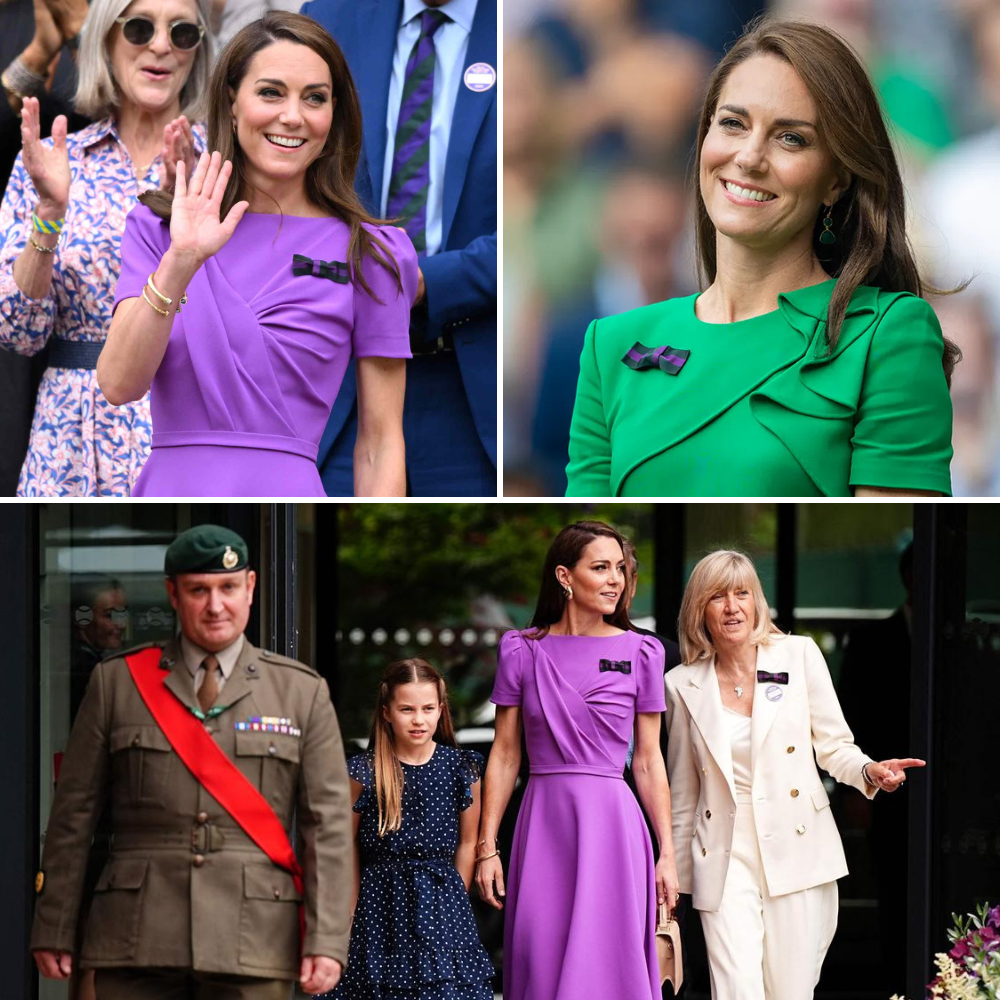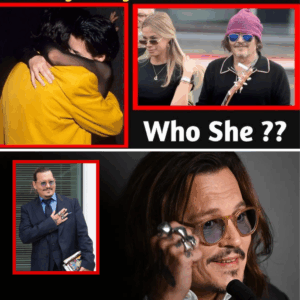
With a smile as composed as ever and poise befitting a future queen, Princess Catherine, the Princess of Wales, made her dramatic return to Wimbledon this summer. After months away from the public eye following a cancer diagnosis, the beloved royal defied all expectations by attending not one but both singles finals of the world-renowned tennis tournament. Her appearance was not just a return to duty—it was a powerful public statement.
While the world had grown accustomed to her graceful presence at Wimbledon each summer, this year was different. It wasn’t just a royal appearance. It was a quiet act of resilience and dedication that captivated millions.
The Return of a Royal Icon
On July 12th, Kate arrived at the All England Lawn Tennis and Croquet Club to attend the women’s singles final between Iga Swiatek and Amanda Anisimova. Wearing an ivory short-sleeved blazer and pleated skirt, she looked every bit the royal fashion icon. But her most notable accessory wasn’t a designer piece—it was a ribbon in purple and green, symbolizing her official role as Patron of the Club.
Her presence alone was enough to send the British press and international media into a frenzy. For over a year, her public engagements had been severely limited due to health reasons. Her return was a sign of both recovery and unwavering commitment to her royal responsibilities. The image of Kate walking into Centre Court, head held high, smiling warmly, became one of the most shared and discussed moments of the tournament.
A Royal Tradition That Transcends Sports
Since becoming the Patron of the All England Club in 2016, the Princess of Wales has typically been the one to hand the trophies to the winners of the women’s singles category. Though health limitations prevented her from maintaining this tradition during the semifinals, she made sure to uphold it in the final moment—presenting the winner’s cup to Swiatek and congratulating runner-up Anisimova with characteristic grace.
The following day, she returned to Centre Court for the men’s final between Jannik Sinner and Carlos Alcaraz. This time, she was accompanied by her husband, Prince William, and two of their children, Prince George and Princess Charlotte. Together, they presented a portrait of the future of the monarchy—elegant, united, and deeply involved in national and cultural life.
Kate, in a soft blue dress and wide-brimmed hat, looked vibrant and composed. George and William wore matching navy suits, while Charlotte charmed audiences in a frilled white dress. The absence of the ever-energetic Prince Louis drew mild disappointment among fans, but the family still created a memorable scene of royal solidarity.
Kate later awarded the men’s championship trophy to Jannik Sinner, who became the first Italian to win the Wimbledon men’s singles title—a historic moment made more iconic with the royal presence.
Why Wimbledon Matters More Than We Think
Wimbledon is not just a tennis tournament. It’s a symbol of British tradition, decorum, and prestige. Held annually since 1877, it’s the oldest and perhaps most elite tennis championship in the world. It’s one of the four Grand Slam tournaments, yet it alone retains the classic grass court and a strict dress code for players and spectators alike.
But what sets Wimbledon apart is its unique blending of sport, fashion, and high society. Celebrities, designers, aristocrats, and political figures mingle in the Royal Box. Attending Wimbledon isn’t merely about watching a match; it’s about being seen at the right place, with the right people, in the right way.
This year’s star-studded audience included David Beckham, Cate Blanchett, Tom Holland, Keira Knightley, Benedict Cumberbatch, and even Anna Wintour. But even among A-listers, it was Princess Kate who stole the spotlight.
For those in fashion and media, her appearance wasn’t just about royal duty—it was an unmissable fashion moment. Her wardrobe choices at Wimbledon often make headlines, set trends, and subtly reflect her current status or personal statements. This time, it subtly expressed dignity, softness, and strength in the face of adversity.
A Personal Choice, A Public Message
Why did Kate attend despite her health condition? Sources close to the royal family have emphasized her deep connection to the event—not only as a patron but as a personal fan of tennis. Moreover, royal appearances often serve a dual purpose: fulfilling ceremonial roles while also communicating symbolic messages.
By appearing publicly for the first time since her diagnosis, Kate signaled a message of hope, endurance, and continuity. For many, especially those battling illnesses themselves, her appearance was more than ceremonial—it was inspirational.
And the choice of Wimbledon was no coincidence. As a globally recognized event steeped in British heritage, it served as the ideal stage for her return. Unlike red carpets or media-heavy charity galas, Wimbledon allows for visibility with dignity. It’s a place where royals can maintain formality while still engaging with the public. It offers the prestige of monarchy without the burden of excess exposure.
The Public Response
Social media exploded with admiration for the Princess. Messages of support poured in globally. Many praised her courage, her fashion, her poise—and most of all, her devotion to duty.
For some, her appearance re-energized public affection toward the royal family, especially after a challenging year marked by various controversies and institutional criticisms. Kate’s image continues to be one of the monarchy’s most stabilizing assets.
More Than Just a Game
As the applause died down on Centre Court, it became clear that this year’s Wimbledon had delivered more than athletic thrills. It reminded us that public figures, even those battling private pain, can offer strength simply through presence. Kate’s quiet resilience reminded the world why the monarchy still matters in modern Britain—not for power or politics, but for continuity, dignity, and connection.
And as the cameras flashed, capturing the Princess of Wales handing over the trophy with a serene smile, one thing was evident: this was not just a return. It was a statement.




